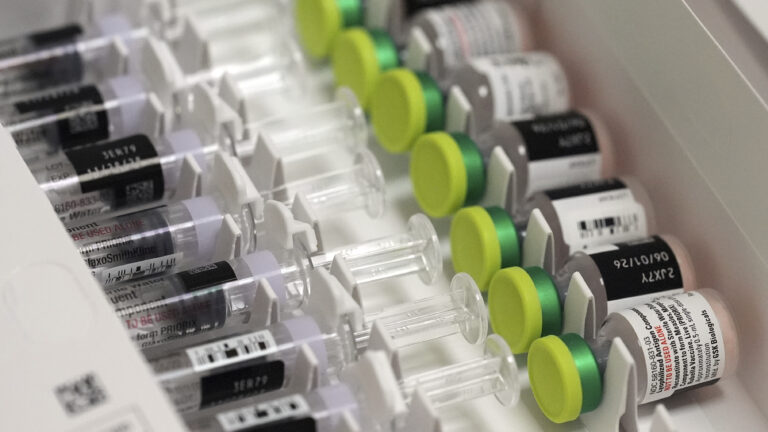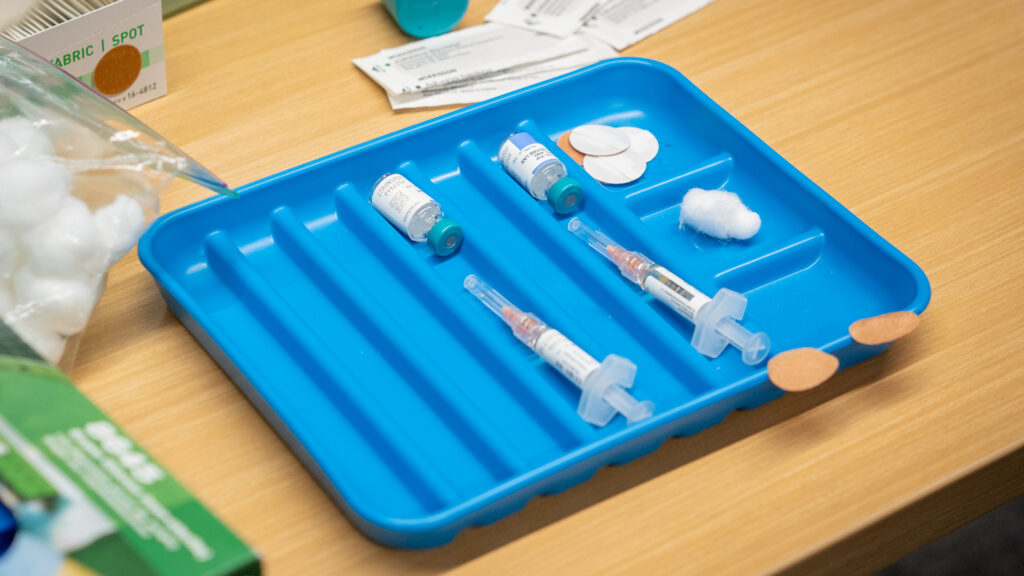Jim O’Neill, acting director of the Centers for Disease Control and Prevention, called for drastic changes to the measles, mumps, and rubella vaccine that aren’t supported by medical research, intensifying the Trump administration’s criticism of a shot that’s a cornerstone of the childhood vaccination schedule.
“I call on vaccine manufacturers to develop safe monovalent vaccines to replace the combined MMR and ‘break up the MMR shot into three totally separate shots’,” O’Neill said in a post on X on Monday. His post did not give a reason for breaking up the MMR shot, but linked to a message from President Trump, which called for separating the shot into three vaccines and giving it at different medical appointments.
Outside experts have previously said that the idea could leave children more vulnerable to infections and is logistically infeasible, because monovalent vaccines for those diseases are no longer available in the U.S.
One study, published in 2017, found that 69% of U.S. children who received a combination vaccine completed the recommended series — compared to 50% of kids whose parents opted for the single antigen vaccines.
O’Neill is deputy secretary of health and human services, and his remarks build on scrutiny of childhood vaccines from the administration. President Trump recently called for the MMR vaccine to be split into three separate shots, given at different doctor’s visits, part of a bevy of unfounded doubts the president raised about vaccines at a White House event.
The CDC’s Advisory Committee on Immunization Practices voted to restrict access to the MMRV shot, which combines the MMR vaccine with one against varicella, or chickenpox, to children ages 4 and older. Younger children should get the MMR shot and the varicella vaccine separately, ACIP said. That was already the recommendation from the CDC and the way in which most kids got their shots.
There is no evidence that giving shots separately for measles, mumps, and rubella offers any advantage in terms of safety or effectiveness. The idea originated with Andrew Wakefield, who claimed that the MMR vaccine was linked to increasing rates of autism. Wakefield’s paper purporting to identify such a link has since been retracted, and Wakefield was taken off the U.K.’s medical register. Multiple studies have shown that there is no link between the MMR vaccine and autism.

STAT Plus: 3 burning questions about the MMR vaccine, answered
Making monovalent vaccines available would likely take years. The vaccines would have to undergo a lengthy review process, including new clinical trials, reorienting vaccine development pipelines, and applying for FDA approval.
A vaccine against measles, mumps, and rubella has been administered for over half a century and given to millions of people without clear issues arising.
The vaccine is extremely effective in preventing disease, and researchers have found the risks of side effects are minimal.
There is a small increased risk of a febrile seizure in children in the 12 days after receiving an MMR vaccine. At ACIP’s recent meeting, a CDC scientist put that risk at one additional seizure per 3,000-4,000 MMR vaccinations. Taking the MMRV vaccine increases those odds for younger kids, which is why the CDC recommended babies take the varicella vaccine separately.
Even if the administration does not ultimately take action to make monovalent vaccines available, the rhetoric from top officials could deter parents from getting the vaccine going forward.
“Whatever their intent is, the outcome is totally predictable. It’s lower vaccination rates, more disease and more kids dying from preventable illness,” Jake Scott, an infectious disease physician at Stanford University, previously told STAT. “Proposing to separate vaccines that can’t be separated, the only practical effect of that is to make parents question the current schedule.”
